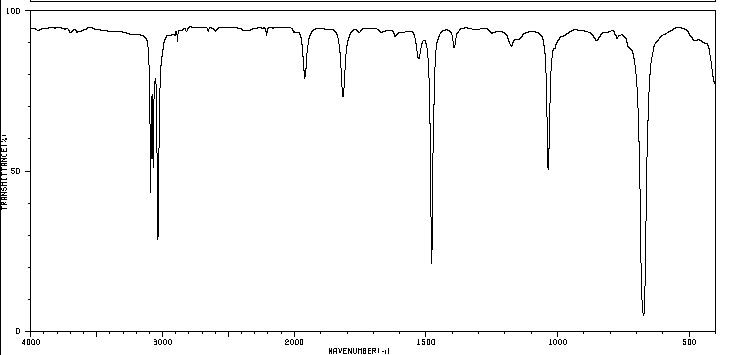In an infrared spectrum, frequency (in wavenumber) is plotted against the percentage of light transmitted (transmittance). The transmittance percentage is defined as the quotient between the intensity of the light transmitted through the sample, $I_M$, and the intensity of the light of the reference beam $I_R$ multiplied by 100. \begin{equation} \% Transmittance=\frac{I_M}{I_R}\times 100 \end{equation} The frequency sweep ranges from 400 to 4000 $cm^{-1}$

- Fundamental absorptions are vibrational transitions from the ground state to the first excited state. They give rise to the bands of greater intensity.
- Overtones are vibrational transitions from the ground state to higher excited states. The absorption frequencies are $2\nu,3\nu...$ where $\nu$ is the frequency of the fundamental absorption.
- Combination bands, result from the coupling of 2 bands $\nu_1$ and $\nu_2$ to give rise to a new frequency band $\nu_{comb}=\nu_1 + \nu_2$
- Difference bands, , result from the coupling of 2 bands $\nu_1$ and $\nu_2$ to give rise to a new frequency band $\nu_{comb}=\nu_1 - \nu_2$
- Fermi resonance, result from the coupling of a fundamental absorption band with an overtone or a combination band.